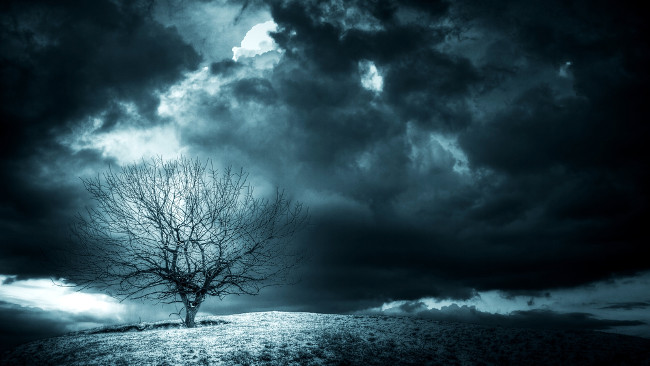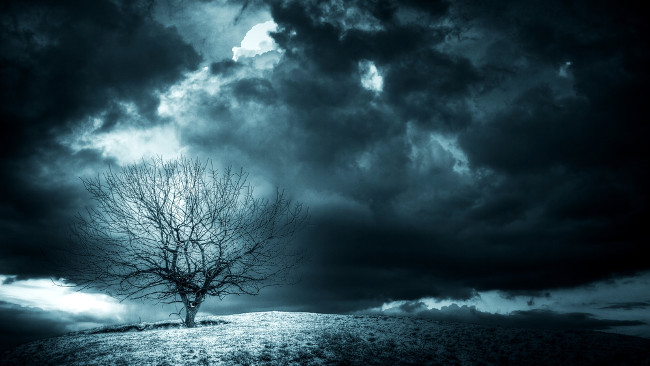
 Tree on hill graphic by www.shutterstock.com
Tree on hill graphic by www.shutterstock.com
Think you know what to do with your high dynamic range video recordings? There may be other creative possibilities of HDR that you should consider.
There is no doubting that HDR will be the next big thing in 2D viewing and it is gaining traction quickly, with new on set monitoring and recording options becoming more widely available to a mass market.
The great thing about HDR is that you do not need the latest and greatest 4K camera to take advantage of it. Many 1080p cameras already have Log gamma modes and/or raw recording abilities. And since HDR images already look higher resolution, simply because the human brain responds much better to contrast than it does to pixel numbers, there is life in your old camera yet.
Realism and creativity
HDR is often talked about in terms of being able to display more realistic images, but to say this overlooks an important aspect of film cinematography. We don't always want the most realistic looking picture! If we did, then the whole industry of grading and colourisation would go out of business pretty quickly.
When colour reached a mass audience in cinemas with films such as Gone With The Wind and The Wizard of Oz (and before anyone mentions it, I acknowledge that many colour films were made before these), filmmakers were at pains to show off the new technology. Everything was bright with lots of stark colours, but eventually as time moved on, they discovered how they could use colour more creatively. It could influence mood, in many instances giving the picture a thoroughly desaturated grainy look, such as in Sidney Lumet's The Deadly Affair, which used out of date film stock to purposeful creative effect.
Today's filmmakers are more attuned to the creative possibilities offered by new technologies and how to use them more subtly. The advent of HDR presents new opportunities. The full wide contrast range offered by the format can be used in its entirety – or it can be used creatively.
For example, if you so wanted, you could make the grade look like standard video. There's nothing stopping you creating an HDR version of a video that falls within traditional brightness values. History tells us that this will eventually become a 'vintage' look!
On the other hand, you could use all of the range afforded to you to make the most realistic looking picture possible. But where is the fun in that? HDR, in fact, offers a few creative possibilities. For example, it can reach deeper into the shadows than traditional video. Or you could reach further into the highlights and still retain detail. For example, imagine a sci-fi film sequence that involves searing light. You could really push the boundaries (and the audiences eyesight!). Just as a high quality, high bit-depth sound mix can reserve head room for big explosive sounds, so HDR video allows you to retain wiggle room at the very darkest end of things and at the very brightest for when you need to use it creatively.
The reason why HDR is such a step change is because not only are the results plain to see, but it offers producers much more creative control over the look of the film – so much so that I believe that once it becomes the norm, nobody will want to go back to grading legacy versions for older displays. Of course they will have to, for a while at least, but there will be big compromises involved if the production really uses HDR to its creative full in order to do this.
Things to consider
There are some drawbacks, though. Just as the introduction of HD showed up any flaw in the picture, such as slightly off focus or lens artefacts, HDR displays and grading can show up any flaws with the capture cameras much more overtly, too. Any sensor noise is made much more apparent, so shooting with a quiet camera will be a must. This may mean that much older Log gamma capable cameras may not offer optimum performance in this regard.
Further, the bit-depth of the recording will be much more important. 8-bit log capture may be just about okay at a pinch for grading to output in REC-709 colourspace or for the average computer display. But, on a good HDR display, any issues such as banding due to a lack of tonal depth will be made all the more visible.
HDR will be big. It is fairly straightforward to implement and the advantages are much easier to see than some 'gimmicky' developments, such as the now quietly binned 3D revolution. It will also offer creative possibilities in ways that we might not fully realise immediately.
Graphic by Shutterstock
Tags: Technology



Comments